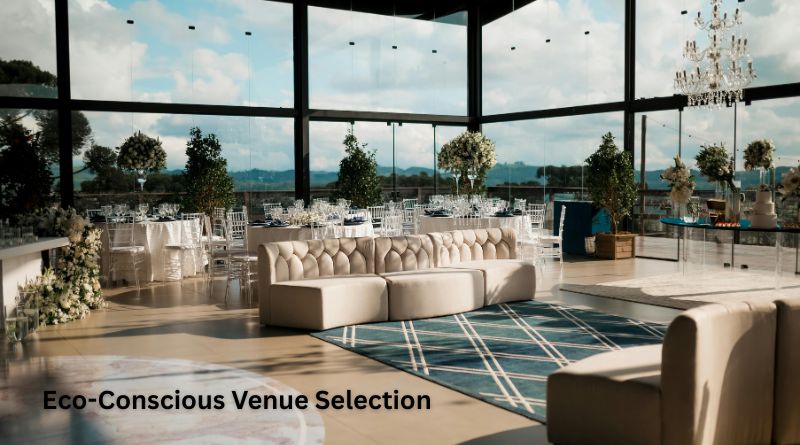Choosing the right venue sets the tone for an entire event, and when sustainability is a priority, the decision carries even more weight. From energy systems to waste management, every element of a space plays a role in how responsibly an event operates. Platforms like Brown Paper Tickets, a ticketing service designed to support streamlined and paper-free logistics, help event organizers build sustainable experiences from the first guest touchpoint to the venue itself. When every component of the event, from registration to venue selection, reflects intentionality, attendees can feel the difference.
Today’s audiences want to know that the spaces they gather in reflect the same values they bring with them. A venue is no longer just a backdrop. It’s a statement. Whether hosting a conference, concert, or fundraiser, the environment must support both the functionality of the event and the ethical expectations of the people attending.
Beyond Greenwashing: Defining Real Sustainability
A sustainable venue is more than a building with a recycling bin. It’s a space designed or actively maintained, with energy efficiency, environmental stewardship, and community impact in mind. The best venues consider everything from lighting and HVAC to materials sourcing and staff training.
One indicator of sustainability is certification. Venues that carry designations like Leadership in Energy and Environmental Design (LEED) or Green Globes have committed to meeting specific benchmarks for eco-performance. These aren’t cosmetic gestures. They reflect measurable efforts to reduce energy usage, improve air quality, and conserve water.
Certifications alone don’t guarantee the right fit. Organizers should also ask about daily practices: Does the venue use LED lighting? Are composting services available? Is there an effort to work with local or ethical vendors? Asking these questions early in the planning process gives organizers time to choose spaces that match their vision and communicate those values clearly to attendees.
Location, Accessibility and Emissions
Where a venue is located plays a critical role in its environmental impact. Choosing a walkable site, near public transit or close to the majority of guests, helps reduce reliance on single-occupancy vehicles. For destination events, proximity to hotels, dining and attractions cuts down on transportation emissions and simplifies logistics for guests. Encouraging attendees to carpool, use ride sharing, or access shuttle services also contributes to a lower footprint.
Many venues now offer bike racks, EV charging stations, and transportation partnerships that help align access to sustainability goals. These practical amenities reinforce a planner’s commitment to reducing emissions without creating any inconvenience. When guests arrive with minimal friction and environmental cost, their experience begins on the right note.
Infrastructure That Works With, Not Against, the Environment
A space’s infrastructure tells the story of its environmental priorities. The way it manages air, water, waste and energy can either support or disrupt an event’s goals. Sustainable venues minimize consumption by using motion-sensor lighting, energy-efficient HVAC systems, and low-flow fixtures. Some incorporate renewable energy sources, like solar panels, or maintain living roofs that improve insulation and water retention.
Venues built with recycled or non-toxic materials offer healthier air quality and a reduced construction footprint. Others go a step further by implementing zero-waste practices or offsetting their annual emissions through credible environmental programs. As an organizer, selecting a space with these features not only benefits the planet but also builds trust with attendees who value consistency between message and action.
Materials, Decor and Modular Flexibility
The most sustainable venues support minimalist, modular setups. Rather than encouraging large, wasteful installations, they provide reusable furnishings, adaptable layouts, and built-in technology that reduces the need for external equipment. It doesn’t mean events must feel sparse. In fact, these types of venues often support more creative freedom by offering neutral design foundations, ambient lighting, and natural materials that require little enhancement. Reusable elements cut down on shipping, storage, and construction waste. They also make transitions smoother for staff, which improves flow and guest experience.
Even decorative decisions can reflect values. Choosing spaces that allow digital signage or projection mapping in place of printed banners creates visual interest while keeping waste in check. Platforms like Brown Paper Tickets recognize the importance of sustainability through fair-trade practices, carbon offset programs, and a commitment to zero hidden fees.
Partnering With the Right People
A sustainable space is made better by the people who manage it. Staff trained in eco-conscious practices can help reduce energy usage, prevent waste and keep events running efficiently behind the scenes. Many venues now offer in-house sustainability coordinators or green event packages. These services can include composting stations, donation support, food recovery partnerships, or data tracking for post-event reporting.
By working closely with venue partners who care about impact, organizers gain valuable insight and logistical help in executing a more responsible event. This spirit of collaboration makes a difference. When venue staff understand the event’s goals, they’re more likely to solve problems with intention and assist with implementation at every step.
Transparency and Guest Awareness
Even the most sustainable venue needs clear communication to be effective. Guests won’t automatically know where to recycle, how to access bike racks, or what makes the space environmentally responsible unless that information is shared. Thoughtful signage, verbal cues from staff, or digital updates sent through the event app can guide attendees toward responsible behavior. These prompts serve two purposes: they improve participation in eco-friendly practices and remind guests that their actions matter.
Transparency also extends to sharing the venue’s story. Letting attendees know what makes the space special, from solar panels to reclaimed wood floors, creates connection and appreciation. It turns the venue from a passive setting into a living part of the experience.
Measuring the Impact
Post-event reporting is no longer reserved for attendance numbers and speaker highlights. More planners are beginning to track waste diversion, energy consumption, and local business partnerships. Venues that can provide environmental data after an event allow organizers to reflect, improve, and celebrate their impact. These metrics can be used in follow-up emails, sustainability reports, or case studies for future planning.
When guests see the results of their participation, such as how much waste was diverted and how many meals were donated, they feel a sense of contribution. It extends the event’s message beyond the final session and leaves a lasting positive impression.





